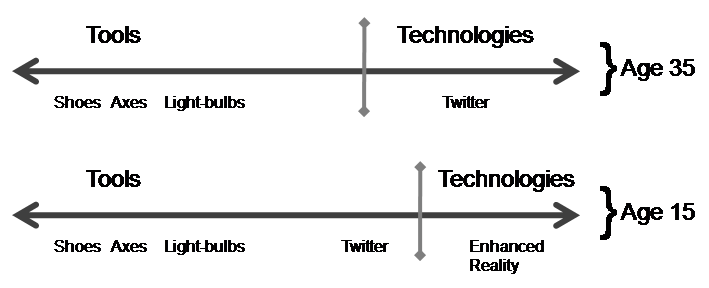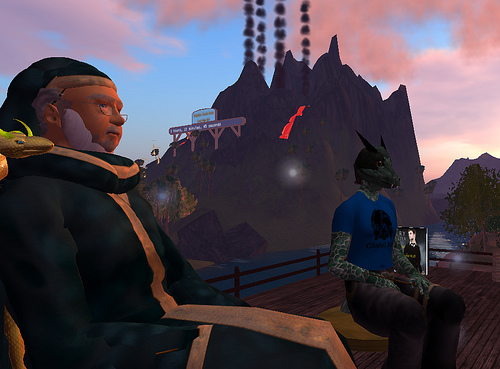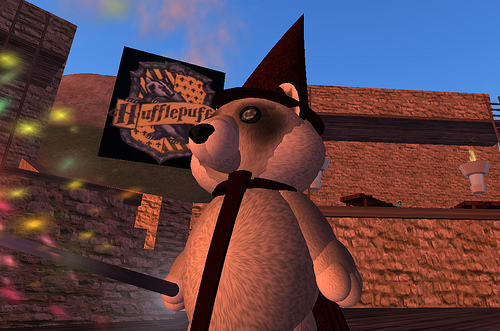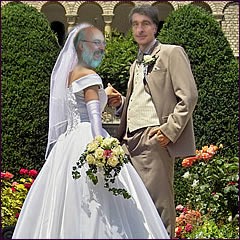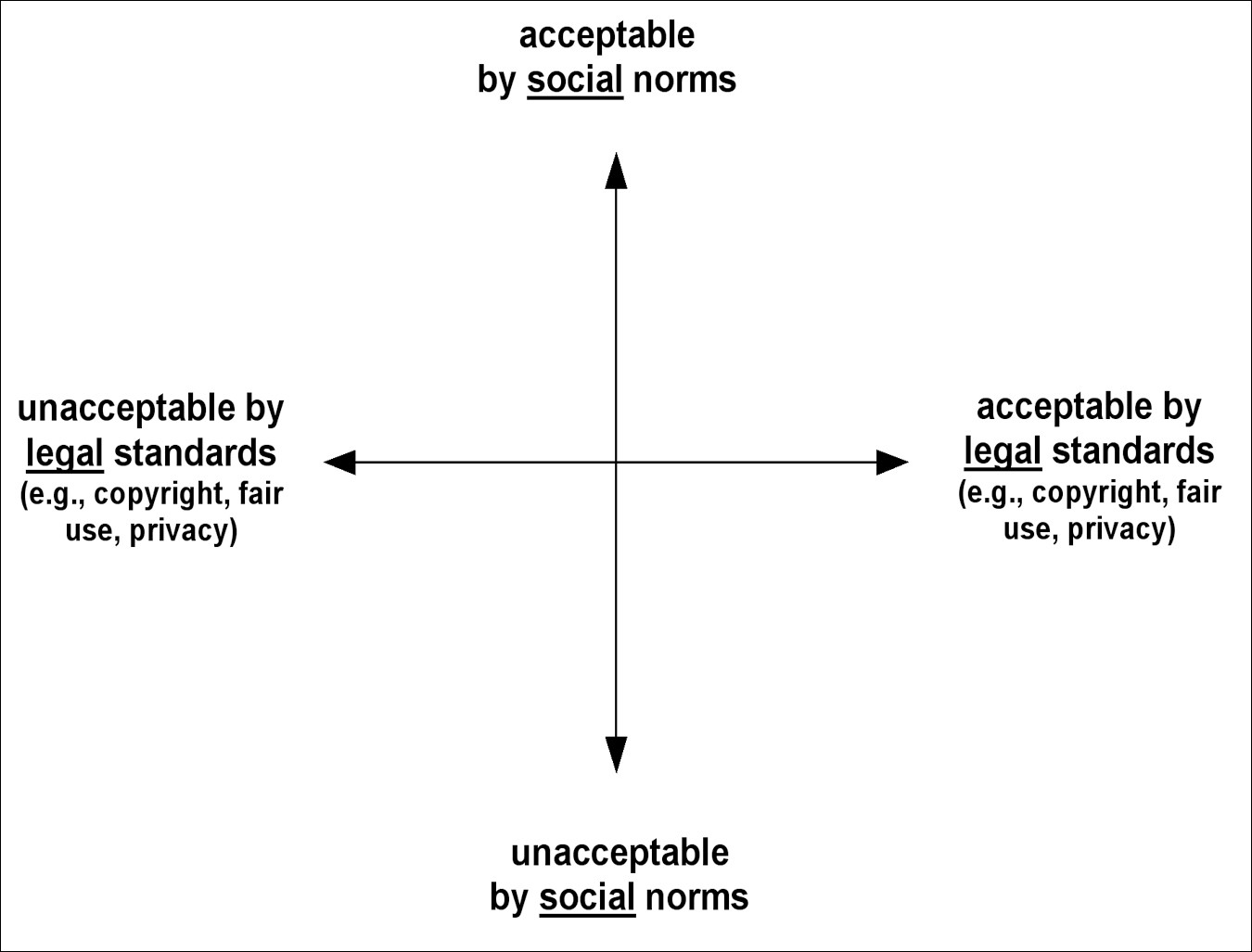Framing the Candidates (Part One): A Closer Look at Campaign Biography Videos
/George Lakoff's book, Don't Think About an Elephant, has been one of the most influential arguments about the nature of American politics to emerge in recent years. Lakoff, a linguist, turned his attention to the "framing" of political discourse. If you want to look more closely at his argument, "A Man of His Words" is an online excerpt which pulls out most of the ideas that are going to interest us here. Lakoff argues that the Democrats lose elections even though they often have the facts on their side because the Republicans typically frame the debate. Consider for example the ways McCain has transformed the current energy crisis from one which might deal with the environment or economics or alternative energy to one which rises and falls on the question of off-shore drilling. Or consider the ways that the Republicans have deployed terms like "maverick" and "reformer" to distance themselves from the Bush administration. To turn this around, the Democrats need to reinvent themselves -- not by shifting their positions but by altering the frame.
As Lakoff explains, "Reframing is social change.... Reframing is changing the way the public sees the world. It is changing what counts as common sense." Much of the early excitement around Obama was that he seemed to offer the most compelling new way to "reframe" progressive politics and thus offered a way out of failed rhetoric of the past. For some, this is about style over substance or a matter of "just words," but Lakoff argues that framing is about a structure of ideas that gets evoked through particular words and phrases but has its own deep logic that shapes how and what we think.
In a simple yet suggestive analysis, Lakoff characterizes progressive and reactionary politics in terms of what he calls the Nurturing Parent and the Strict Father frames. According to the Strict Father model, Lakoff writes, "the world is a dangerous place, and it always will be, because there is evil out there in the world. ...Children are born bad, in the sense that they just want to do what feels good, not what is right." The strict father "dares to discipline" his family and supports a president who will discipline the nation and ultimately, the world. According to the progressive "nurturing parent" scenario, "Both parents are equally responsible for raising the children. ...The parents' job is to nurture their children and to raise their children to be nurturers of others."
Swing voters share aspects of both world views. The goal of politics, Lakoff suggests, is to "activate your model in the people in the middle" without pushing them into the other camp.
We can see this as almost a reverse of old-style Christian doctrine in which the relation of a husband to his wife or a father to his child is supposed to mirror the relations of God to man. In this case, the family becomes a microcosm through which we can understand the relationship of the president to the nation and the world.
This is consistent with an argument that I put forth in the introduction to The Children's Culture Reader that the Republicans and the Democrats both use the figure of the child as a rhetorical device in talking about their visions for the future of the country, but they understand the family in very different terms. In an analysis of the 1996 GOP and Democratic national conventions, I contrasted Hillary Clinton's deployment of the phrase "It takes a village to raise a child" with oft-cited Republican images of the family as a "fort" defending its members against a hostile world.
As a teacher, I've found that one of the best ways to introduce this important argument to my classes has been to engage in a critical comparison between the official campaign biography videos, shown at the national conventions, and intended to link the candidate's personal narrative with the larger themes of the campaign. Here, we can see very explicit connections between the ways that the two parties understand the family and the nation. These videos are easy to access on the web and bring into your classrooms.
Over my next three posts, I will look more closely at first the videos for the two Presidential candidates, then the bios for the two Vice Presidential candidates, and finally parodies of these videos produced for The Daily Show. I am hoping that this will provide inspiration for educators who might want a way to talk about the campaigns, the differences between the parties, and the role of media in the process.
First, a few general points. Students often react to these videos when they first see them as if they were documentaries, straight forward presentations of the facts of the candidates' lives. If Obama and McCain tell very different stories, it is because they led very different lives. And this is of course partially true. The videos mobilize elements from the candidate's biographies to construct narratives about them which are designed to introduce them to the American people. For many votes, these videos and the acceptance speeches are the first time they are paying attention to these candidates.
Yet, keep in mind the role selectivity plays here -- we can't tell everything about their lives in a short video, so get students to think about what they decide to include and what they leave out of these videos. There's also the question of framing -- what gets said by the candidate, by the people in his or her family, by others, and by the narrator -- which helps us to understand this person in specific ways. And then there's the matter of technique -- what kinds of images do we see, what role does the music play in setting the tone for these stories.
I've found that these videos work best in a classroom setting where I show them side by side so that the students compare the differences in their approach. On one level, there's a well established genre here -- a general framing, followed by childhood experiences, early career, courtship and marriage, education, national service, early political life, fatherhood and family, and launch of the campaign. These similarities make it easy to see the differences in framing at work. If you are pushed for time, as I was in class the other day, you are better off showing the first 2-3 minutes of each, and then getting the discussion started, than showing one through all the way. It is through the comparison that we really understand how these videos deploy melodramatic devices and images of the family to shift how we think about the candidate's relationship to the nation.
Obama and the Nurturing Parent Frame
From start to finish, the Obama video is focused on constructing the ideal image of the nurturing parent who will insure the well being of all Americans. The very opening lines of the video already evoke the image of childhood: "It is a promise we make to our children that each of us can make what we want from our lives" and the climax of the video comes when we return to that opening statement and build upon it: "It was a promise his mother made to him and that he intended to keep." Think about the difference between talking about the "American promise" and the "American dream," and you know a great deal about the ideological differences between the two parties.
The idea of "empathy" is a central cornerstone of the family as depicted in this video. It emerges most powerfully in the story about Obama's mother urging him to "imagine standing in that person's shoes. How would that make you feel." and again, by the end of the video, this concept of empathy becomes a cornerstone of Obama's relationship to the nation, as he describes how he remembers his mother as he travels "from town to town." Empathy runs through the list of values Obama tells us that he and Michelle want to pass down to their children: "hard work, honesty, self-reliance, respect for other people, a sense of empathy, kindness, faith." And we can see this respect for nurturing and empathy when he talks about the death of his mother, who was "the beating heart" of their family. Indeed, moments when candidates talk about personal losses of family members and loved ones are often potent appeals to the viewer's own empathy, since many of us feel our common humanity most powerfully through our shared experience of mortality.
And this logic of empathy emerges through the suggestion that Obama knows first hand the suffering and anxieties felt by average Americans: "I know what it's like not to have a father in the house, to have a mother who's trying to raise kids, work, and get her college education at the same time. I know what it's like to watch grandparent's age, worrying about whether their fixed income is going to be able to cover the bills."
We can see this last comment as part of a larger strategy in the video to depict Obama's personal narrative as the "story" of America and his "search for self" as a quest to better understand the nation that gave him birth. As the narrator explains, "By discovering his own story, he would come to know what is remarkable about his country." And this is an outgrowth of the first thing we are told about his mother, that she knew her son was an American "and he needs to understand what that means."
This video works hard to combat images of Obama's background as exotic, as outside the mainstream. There is no reference here to Hawaii and only an implicit nod to the fact that he spent part of his life overseas, even though this last detail has been central to the candidate's appeal internationally. The focus is on the most "heartland" aspects of his family background -- a strong focus on his grandparents who come from Kansas, and their experience of the Depression and World War II. Obama got into trouble for suggesting that some people in rural Pennsylvania were "bitter," so the video is careful to say that his grandparents were not "complainers." When it comes time to capture his sense of pride in his country, he tells a story about sitting on his grandfather's shoulders and waiving a flag at the return of the astronauts.
The representation here of his marriage might be summed up with the old feminist slogan, "the personal is the political." Michelle describes the moment she fell in love with Barrack: watching him deliver a speech in the basement of a community center in which he spells out "the world as it is" and "the world as it should be." This story collapses Obama's hopes for his family and his hopes for his country in a sublime moment of utopian possibilities. Michelle emerges as the ideal arbiter of his political integrity because she can testify that he lives these values through his personal lives.
And the final statement of the "nurturing parent" model comes when Obama tells us, "One person's struggle is all of our struggles." The government becomes a mutual support system that looks after its weakest members in a world which is often unjust. The president's job is to insure that all of his children gets what they need and deserve and that the "American promise" gets fulfilled and transfered to the next generation.
McCain and the Strict Father Model
If the Obama video sets up issues of nurtering and empathy from its first images, suggested by the long panning shots across American faces and a voiceover about the "American Promise," the McCain video opens with us staring directly into the face of the candidate as a young naval officer, trying to read his character and understand the relationship of this national service to the "mission" ahead. The opening narration starts with descriptions of him as "a warrior, a soldier, a naval aviator, a Pow," before pulling us down to the family -- "a father, a son, a husband", then into his political career. And then we get that surprising moment when he is called "a mother's boy," one suggestion of softness amid a series of hypermasculine sounds, images, and terms. My students suggested that the reference to the mother helps him deal with issues of age and mortality, yet it also seems part of a strategy to manage the negative associations which many independents and Democrats may feel towards the repeated references to his toughness throughout the video.
Strength of character and conviction, coupled with physical toughness as proven through war, are the central virtues ascribed to McCain by the video and they are introduced here once again through the narrative of his family. As suggested by the gender specificity of the "Strict father" construction, the family here, except for the references to the mother, is represented almost entirely through patriarchal bloodlines -- again a contrast to the absent father and strong mother image in the Obama video. We learn about his grandfather who died the day he returned from World War II; we learn about his father who ordered the carpet bombing of a country where his son was held captive, even as he waited at the border hoping for his return. When we see him with his son in the opening series of shots, he is standing alone with his offspring on the side of a mountain. Fatherhood is an extension of manhood and it gets expressed through discipline and competition more than through images of cuddling and craddling.
The critical moments here, of course, deal with his Vietnam war experience which require a recognition of vulnerability and weakness even as the larger narrative centers around his toughness and will power. Consider this key description: "Critically injured, his wounds never properly addressed, for the next five and a half years, John was tortured and dragged from one filthy prison to another, violently ill, often in solitary confinement, he survived through the faith he learned from his father and grandfather, the faith that there was more to life than self."
So, again, we see the passing down of civic virtue through male bloodlines as a central motif in this video. There's no question that the video constructs these experiences as a form of martyrdom out of which a national leader emerged: "The constant torture and isolation could have produced a bitter, broken man. Instead he came back to America with a smile -- with joy and optimism. He chose to spend his life serving the country he loved." or consider the phrase, "he chose to spend four more years in Hell." Or the ways the video depicts his role in the normalization of relations with Vietnam -- "Five and a half years in their hell and he chose to go back because it was healing for America. That's country first." Note this is one of the few places where metaphors of "caring" or "healing" surface in the video and it is specifically in relation to the pain of wartime. A more complex metaphor emerges as Fred Thompson reads aloud a passage from McCain's autobiography about "living in a box" and ends with "when you've lived in a box, your life is about keeping others from having to endure that box."
This toughness and individualism carries over into the discussions of national policy. McCain doesn't believe that the country should care for each of its members but rather he has "a faith in the American people's ability to chart their own course." He is "committed to protect the American people but a ferocious opponent of pork barrel spending and would do most anything to keep taxes low and keep our money in our pockets." What is implied by that contrast between "protecting" the public and "pork barrel spending" and "higher taxes"? There is a clear sense that as a stern father he will give us what we really need but protect us from our own baser urges and desires.
While the Obama video distributed its points across a range of different voices, including a large number of women, the McCain video tends to rely on a voice of God narrator who speaks the unquestioned truth about this man and on comments from McCain himself. All of this creates a more authoritarian/authoritative structure where truth comes from above, rather than emerging from listening to diverse voices, and reflects this notion of stern responsibility rather than nurturing.
This centralized discourse is consistent with the videos focus on experience and its tendency to read McCain as "superior" to others -- "no one cherishes the American dream more," for example, but also no candidate has had his experiences in public service. There is an underlying suggestion here of predestination -- "McCain's life was somehow sparred -- perhaps he had more to do." In this case, the hint is that he is fulfilling God's plan for him and for the country. This issue of predestination resurfaces near the end when the video repurposes some of the core themes of the Obama campaign, including some that McCain has criticized and turns them around, "What a life, what a faith, what a family! What good fortune that America will chose this leader at precisely this time. The stars are aligned. Change will come. But change must be safety, prosperity, optimism, and peace. The change will come from strength -- from a man who found his strength in a tiny dank cell thousands of miles from home."
There's so much more that we could say about both of these videos and that's the point. They are great resources for teaching young people to reflect critically on the ways the campaigns are being "framed." Next time, I will look more closely at the Vice Presidential videos.


